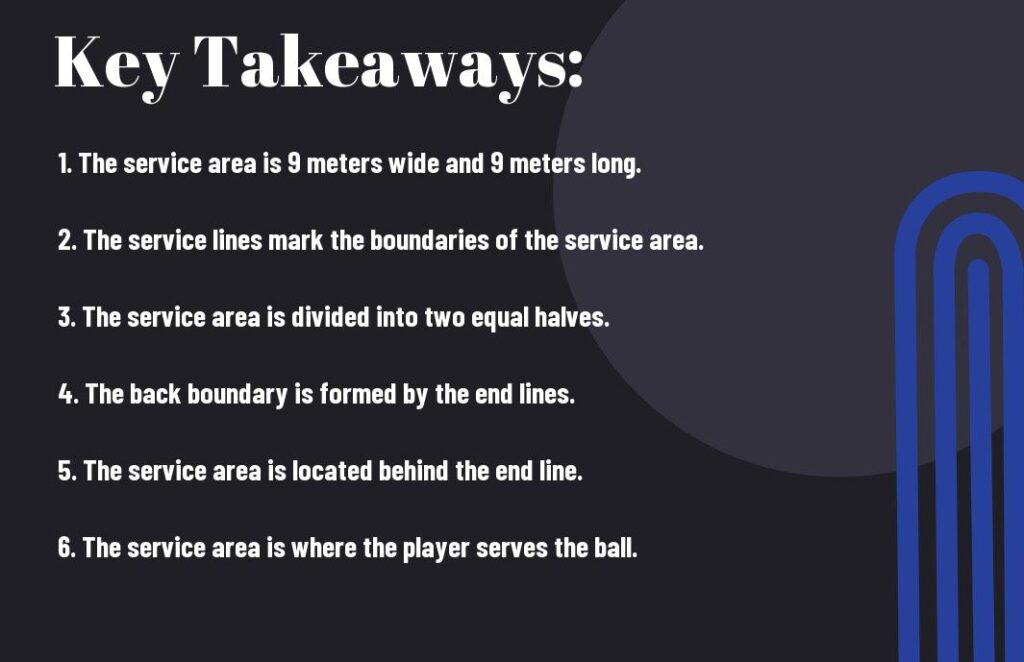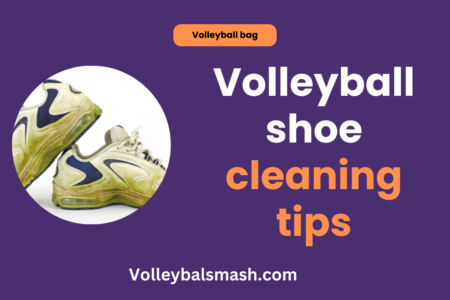Salutations and welcome to our informative blog post about the dimensions of the service area in volleyball. In the sport of volleyball, the service area is a critical component of the game, as it sets the stage for the start of each point. Understanding the precise dimensions of the service area is crucial to optimizing your performance and gaining an advantage over your opponents. In this post, we will delve into the specific measurements and rules governing the service area in volleyball, equipping you with the knowledge you need to excel on the court.
Key Takeaways:
- The service area in volleyball measures 9 meters by 9 meters, with the center line splitting it into two equal halves. The service area is the section of the court from which the serving player must serve the ball to start the rally.
- The dimensions of the service area are crucial for players to follow in order to avoid committing foot faults during the serve. Stepping on or over the end line or the center line during the serve can result in a fault, causing the serve to be replayed or possession to be given to the opposing team.
- Understanding the dimensions of the service area is essential for players to strategically place their serves and to effectively defend against opponent’s serves. By mastering the dimensions of the service area, players can maximize their serving accuracy and placement, as well as anticipate and counteract opponent’s serves more effectively.

Understanding the Dimensions of Volleyball Court
While the game of volleyball may seem straightforward, understanding the dimensions of the court is essential for players and officials alike. A volleyball court has specific measurements that play a crucial role in the way the sport is played. Whether you are a player, coach, or spectator, knowing these dimensions is important for an in-depth understanding of the game.
Full Volleyball Court Dimensions
The full dimensions of a volleyball court are 29.5 feet (9 meters) in width and 59 feet (18 meters) in length. The court is divided into two equal square halves, each measuring 30 feet by 30 feet, separated by a net. The net is placed vertically over the centerline and must be 7 feet 4 1/8 inches (2.24 meters) for men’s competition and 7 feet 4 1/8 inches (2.24 meters) for women’s competitions. These measurements are maintained to ensure a fair and consistent playing field for all teams involved.
Indication and Purpose of Service Area
The service area in volleyball is an essential part of the court, with specific dimensions and purposes. The service area is a 10-foot (3-meter) wide space behind the end line, this section of the court plays a crucial role in the serving process. When you, as a serving player, step foot into this area, you must release the ball while remaining behind the end line. This gives you an opportunity to generate power and aim for a strategic spot on the opposing team’s side of the court. The service area is integral to the flow and strategy of the game, and understanding its dimensions is key to mastering the serving aspect of volleyball.
Detailed Exploration of the Service Area
Now, let’s delve into the specifics of the service area in volleyball. The service area is a crucial part of the volleyball court, and understanding its dimensions is essential for players and coaches. To get a comprehensive understanding of the service area, you can refer to the court dimensions outlined in The court dimensions – Volleyball Basics.
Specifics of Service Area Dimensions
When it comes to the service area, the dimensions are carefully regulated to ensure fairness and consistency in the game. The service area is 9 meters deep from the end line, and it extends the width of the court. It is essential to understand these specific dimensions as they directly impact your positioning and serve techniques.
Impact of Service Area on Volleyball Game
The service area has a profound impact on the flow and strategy of the volleyball game. Your ability to serve effectively and consistently from within the service area can put significant pressure on the opposing team. Conversely, failure to maintain your position in the service area can result in point penalties for your team. Your understanding of the service area dimensions will directly influence your performance and contribute to your team’s success on the court.
Relation between Service Area and Other Court Sections
Lastly, it’s crucial to understand the relationship between the service area and other sections of the volleyball court. The service area is strategically positioned to give the serving team an advantage in setting up for an attack while putting pressure on the receiving team. It is directly connected to the front and back court sections, influencing the flow of the game and players’ positioning.
Importance of Service Positioning to Attack, Defense, and Tactics
The service area’s dimensions play a critical role in the positioning of players for both attack and defense. A well-executed serve puts the receiving team on the defensive, making it easier for your team to organize a strong offensive play. On the other hand, a poorly executed serve can put your team at a disadvantage, allowing the opposing team to set up a solid attack. Proper service positioning also enables you to employ various tactics, such as aiming for specific zones or players to exploit weaknesses in the opposing team’s defense.
Service Area Relation and Interaction with Player Roles
Your positioning in the service area directly impacts the roles of individual players on the court. For example, the server must carefully choose where to aim the serve to maximize the effectiveness of the team’s defense. The positioning of other players, such as the libero and blockers, also depends on the service area and the likely direction of the serve. Understanding the intricacies of service area relation to player roles allows you to optimize your team’s performance and exploit your opponents’ weaknesses.
Conclusion
Now that you understand the dimensions of the service area in volleyball, you can accurately position yourself and your teammates during serving and receiving. Remember that the service area spans from the end line to the attack line, with a width of 9 meters for international play and 8 meters for recreational play. Being aware of these dimensions will allow you to effectively execute serves and receive the ball, ultimately improving your game and contributing to the success of your team.
FAQ
What are the dimensions of the service area in volleyball?
The service area in volleyball is a rectangular area that measures 9 meters by 9 meters, with the center of the area positioned 9 meters from the net. This area is used for serving the ball to initiate play in a volleyball match.
Are there specific markings within the service area?
Yes, the service area is marked with lines to indicate its boundaries. The back boundary line of the service area is the end line of the court, while the two side boundary lines extend from the end line to the sidelines of the court.
Can players step outside the service area while serving the ball?
In volleyball, players are allowed to step outside the service area while serving the ball. However, their feet must not touch or cross over the end line or the sideline during the serve, and they must release the ball before stepping on or over the end line.



